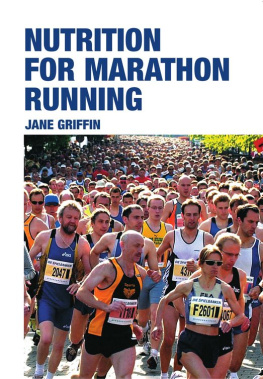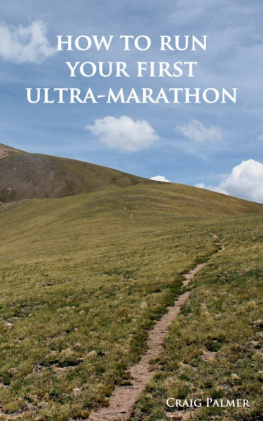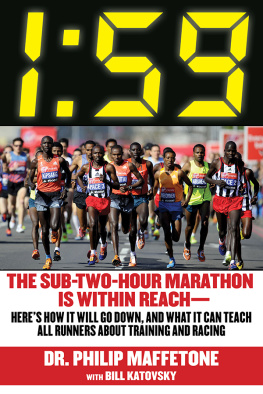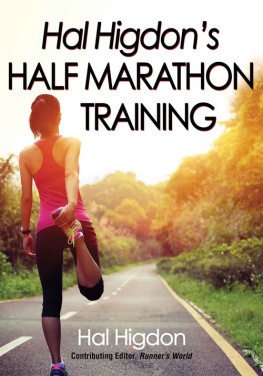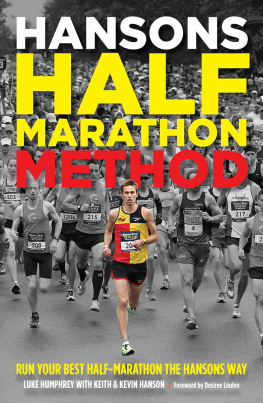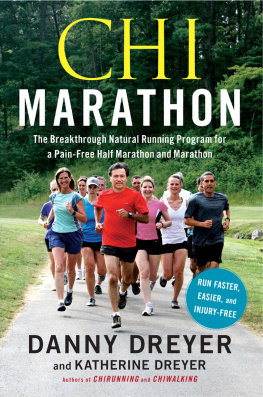For Bruce and Sue
RICHARD NERURKAR
MARATHON RUNNING
FROM BEGINNER TO ELITE
FOURTH EDITION

Contents

The start of the mens marathon at the 2011 World Championships in Daegu
As a sporting event the marathon is unique in many ways. In no other event could absolute beginners find themselves lining up alongside world champions and record holders with a common goal at a shared time and place. No matter what your standard, to conquer the 26.2-mile distance requires immense determination and a huge physical effort.
Richard Nerurkar had the supreme ability of making the whole thing look a lot less daunting. As Britains most successful marathon runner during the 90s, he applied thought and practicality to his training, which took him among the worlds elite. Winning the World Cup in San Sebastian in 1993 gave him the impetus to shoot for the World and Olympic titles. If all this book did was tell the story of Richards personal challenges to reach the very top then that would be enthralling enough. But he has cleverly used his career landmarks to outline the building blocks for a successful marathon, whether you are a first-timer or a seasoned campaigner. He intertwines his own marathon experiences with clear and practical information and advice on how to plan your training, diet, race tactics, recuperation and much more. Each chapter has the key points summarised, making the book very easy to use.
Richard was a tough competitor and a meticulous planner. Here, he has taken some of the hard work out of running the marathon for those who aim to follow in his steps. It will never be easy, as I now know, but this book should act as a guide for all marathoners even for those of us who think we know a thing or two about running.
Steve Cram
TABLE 0.1 KILOMETRES TO MILES CONVERSION
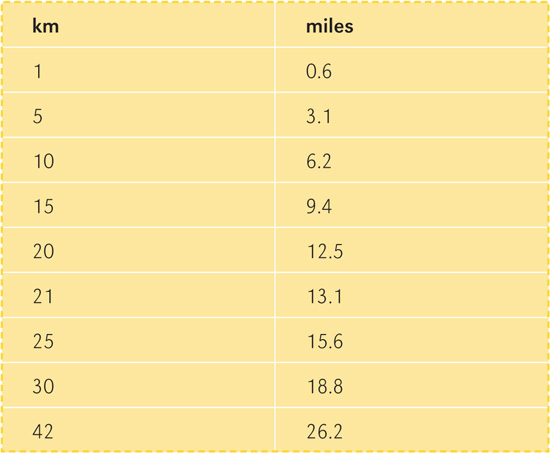
TABLE 0.2 TRAINING TYPE DEFINITIONS

CATEGORIES OF RUNNER
Beginner: Starting running from scratch
First time marathon runner: Perhaps a regular runner, but a newcomer to the marathon
Advanced: aiming to complete a marathon in under 3 hours
Elite: Aiming to complete a marathon in under 2.5 hours.
RUNNING DISTANCES MILES VERSUS KILOMETRES
Whereas in other European countries runners refer to distances in kilometres rather than miles, the reverse is more often the case in Britain. Yet even in Britain, certain set distances in kilometres such as road races over 10km are familiar concepts to many runners.
Working in kilometres has a dual advantage: first, kilometres pass more quickly than miles and thus give you more reference points over the course of a long run; and second, in your training they allow you to mimic the system used at most major marathons, where drink stations are placed every 5km along the route. Strength of tradition and habit will probably ensure, however, that you end up working in miles.
For the purposes of this book, accepted running parlance has been used. Reference can be made, as useful or necessary, to the conversions in (equating to the common reference points during the course of a marathon).
Some years ago I was invited to a new running event in Mumbai, which happened to be Indias first serious attempt at mass-participation running. Twenty-four hours before the race I found myself sitting alongside the one-lap world record holder Michael Johnson and fielding questions seminar-style about how best to run a marathon. The double Olympic champion was handed the microphone first. Dont ask me, came the answer in his Texan drawl, Im a sprinter, not a runner.
Using Johnsons terminology, sprinting and specifically the athlete Usain Bolt have gone a long way in winning back the publics interest in athletics in recent years. Meanwhile, the running boom continues unabated at a mass level. In Britain several new marathon races have emerged in Brighton, Chester and Milton Keynes (to name just a few). Liverpool and Manchester have their own city marathons and at the global level, the series of races known as the World Marathon Majors comprising the big-city marathons of London, Boston, Berlin, Chicago and New York, surpass record participation numbers with each passing year.
Two other developments reinforce this upward trend in marathon running. The first is the continued success of the marathon as a vehicle for raising money for charity. The annual London Marathon, now in its 31st year, has become the biggest single fundraising event in Britain with more than 50 million raised for charities annually.
The other big issue back in the spotlight in world marathon running is the speculation on when the first sub-two hour marathon might be achieved. When the third edition of this book came out in 2008, Ethiopias Haile Gebrselassie had just improved his own world record by 27 seconds when he became the first runner to run the marathon in under 2 hours and 4 minutes (2:03:59). This record is now currently held by the Kenyan Patrick Makau who ran 2:03:38 on the same Berlin course in September 2011, although judging by the amazing depth of world-class marathoners emerging from Kenya (Makaus compatriot Wilson Kipsang ran 2:03:42 in Frankfurt one month after the Berlin race), it appears that this mark has an insecure future. Today, winning times of 2:04 and 2:05 from both Kenyan and Ethiopian athletes have become commonplace in many big-city marathons a far cry from 19 years ago when Britains Eamonn Martin won the London Marathon in a time of 2:10:50 and I achieved victory in my
Inevitably, the names and faces of the athletes grabbing the marathon headlines have moved on from when I wrote this books first edition in 2000. The likes of Thugwane, Tergat, Baldini and Khannouchi have retired; the superlative career of Britains greatest female marathon runner Paula Radcliffe (featured on the front cover of the books second edition) is drawing to a close, and, although he has proved me wrong before (for example, by resurrecting his international track career in Beijing four years ago), the amazing career of Haile Gebrselassie is now surely in its twilight period. This edition includes a number of updated images of both Haile and Paula, friends whom I admire not least for their never-say-die approach to their sport.
Going back to that question in Mumbai, the answer I gave then has changed little over the years: there are still no shortcuts to the thrill of finishing a marathon. But as everyone continues to tell me as youll read in some of the additional personal experiences recounted in this new edition the marathon challenge is still worth it in the end and your memories of it will stay with you for life.
Richard Nerurkar
Brighton
January 2012

Paula Radcliffe alongside Derartu Tulu, Tirunesh Dibaba and Haile Gebrselassie on her visit to Addis Ababa in November 2009
Next page


